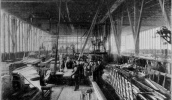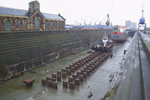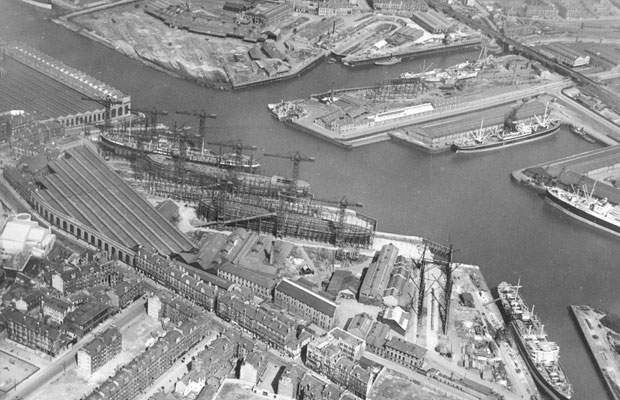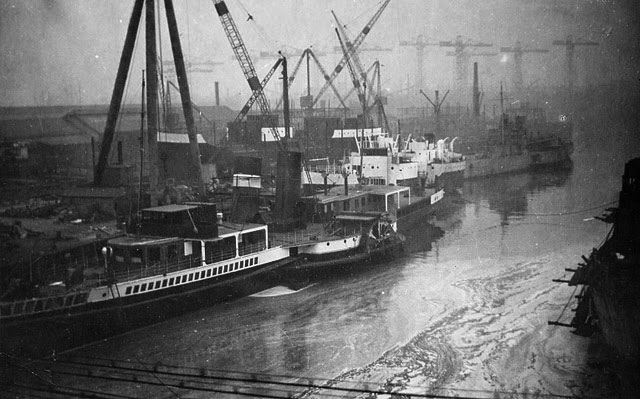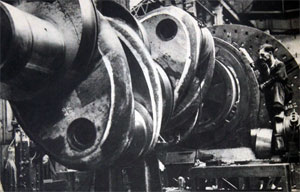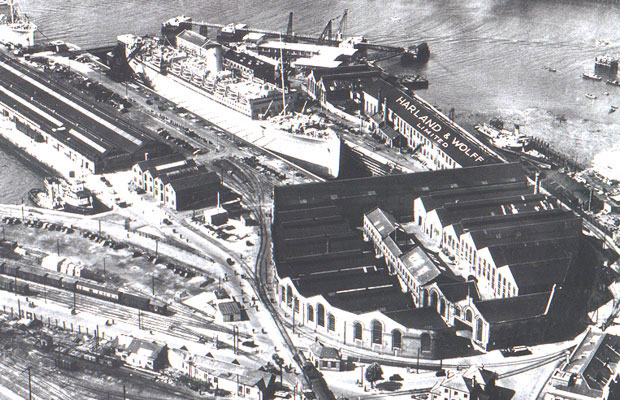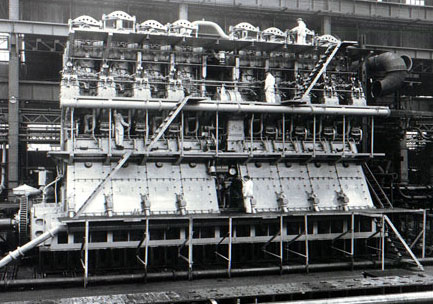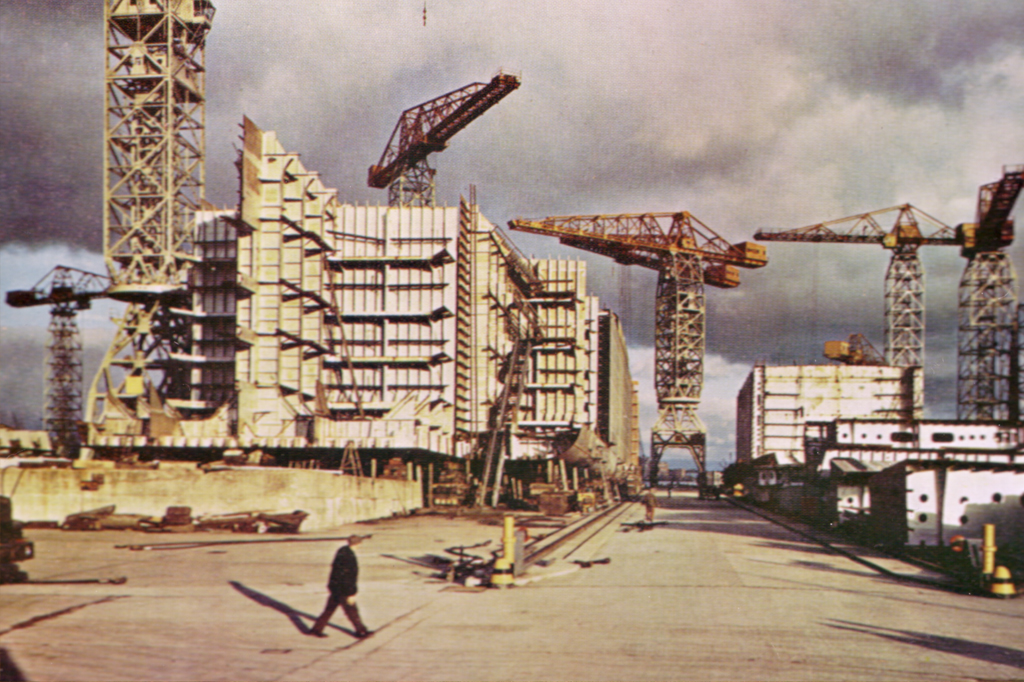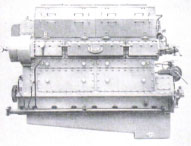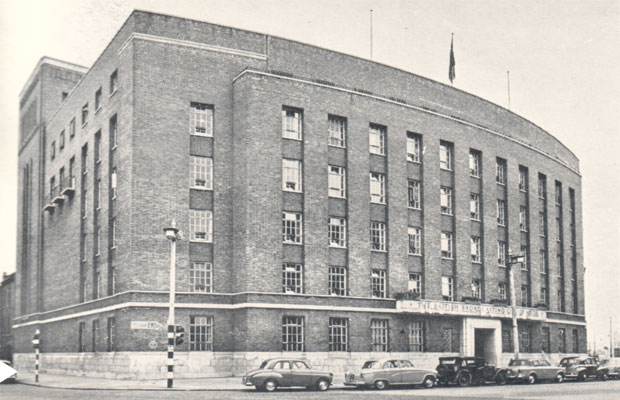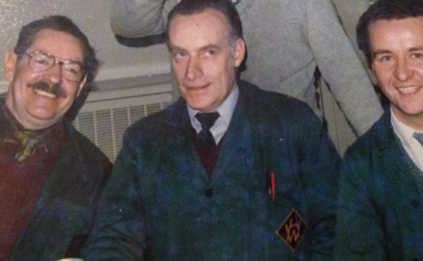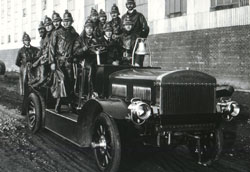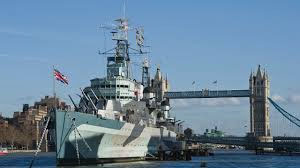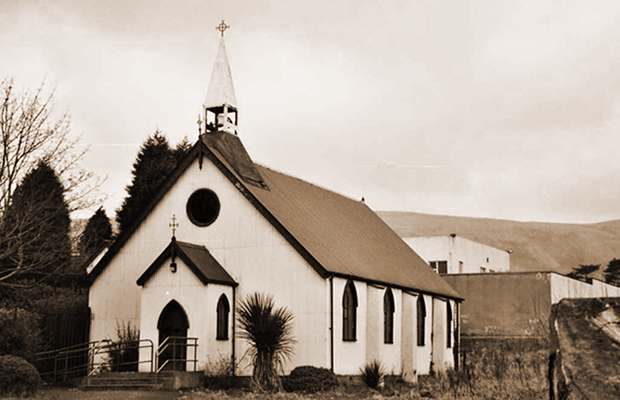Over the years, those concerned with the operations of these nightly sailings, have pursued a progressive policy of building ships, each in turn having surpassed her predecessors in the standards of passenger accommodation, comfortable appointments and impeccable service. It is not surprising, therefore, that the ships now employed have established for themselves the name of being liners in miniature. This reputation has been achieved only by continuous attention to detail in construction and operation. Thus, once every year each vessel is withdrawn for a short period for annual overhaul, survey and "spring cleaning." During these periods, to maintain essential regularity of service an older ship has hitherto filled the gap. Latterly this relief vessel has been the steamer Longford, a stout ship with a personality all of her own and a proud record in peace and war behind her. Good though the Longford may be and she has her own faithful following due to her age she obviously cannot offer quite the same facilities as her post war companion ships.
To maintain the high level set by the remaining vessels of the fleet, Coast Lines Ltd. decided to order a ship for relief work which could sail proudly amidst her sisters. The contract was placed with the Belfast shipyard of Harland and Wolff Limited, who for 70 years have been building ships for the Coast Lines Group, and on May 8, 1952, she was launched and given the appropriate name of Irish Coast.
In the Irish Coast the company are commissioning what they feel to be the perfect all purpose ship. The intention is that, during annual overhaul periods of the passenger vessels of the Group's fleet, she will act as relief. She is undoubtedly the first Irish cross Channel passenger vessel ever built for what might be termed "freelance" duties and as a freelance she has been planned to be adaptable to whatever trade or service she may be diverted to and to acquit herself well in so doing. At the time of her launch Captain A. R. S. Nutting, Chairman of Coast Lines Ltd., described her as this "magnificent ship." Those who voyage in her will certainly endorse this opinion.
She has accommodation for 750 passengers in two classes first and third. Provision has been made so that at peak travel periods such as Christmas, Easter and the Summer holiday season many of the single state rooms can be quickly converted into two berth rooms and the number of passengers capable of being carried stepped up to 1,250.
SPECIAL STATEROOMS Two special staterooms are provided each with private bathroom and fitted with large cot beds and convertible bed-settees of the most modern design. The dressing tables have triple mirrors with special lighting. Sleeping cabins for first class passengers are on the promenade, "A" and "B" decks and comprise single and two berth rooms and one four berth room. All the rooms are attractively furnished with cot-type beds, wash basins with hot and cold water and ventilated on the twin trunk punkah louvre system. Most of the rooms have sidelights whilst those on the bridge front on "A" deck are fitted with large windows. Here the businessman after a busy day and faced with a strenuous programme of engagements will find overnight rest and pleasant surroundings. So too will the family, beginning their annual holiday with the adventure of a sea crossing, find relief from the strains and stresses of the day, while the fact that it will be possible to reserve rooms with inter communicating doors will delight parents. On "A" deck there are two special state-rooms furnished with dressing tables, wardrobes and with the added joy of an adjoining private bathroom.
DINING SALOON Particular attention has been given to make the dining saloon warm and welcoming. The paneling is of golden satin wood and this is the basis of a colour scheme of gold, crimson and white. The entrance hall in the Irish Coast is on "B" deck and here the inquiring traveler will find the ship's office and a ready answer to his questions from a well trained staff. Off the entrance hall is the first class dining room with its delightful decorative scheme small tables, snow white napery and gleaming cutlery and above all, that irreproachable standard of cuisine and service for which these Irish Sea ships are so justly renowned. |

|
SMOKEROOM Essentially masculine in character, the main smoke room is paneled in chestnut and is provided with comfortable easy chairs some upholstered in coral coloured hide and others in blue. And if before retiring a cosy chat and comforting "nightcap" is called for the roomy lounge on "A" deck or the smoke room on the promenade deck will agreeably round off the day. Nor indeed should the opportunity be missed of visiting the cocktail bar on the sun deck cunningly recessed deep into the funnel.

|
LOUNGE Panelled in delicately tinted aspen wood and furnished with deeply upholstered chairs and settees in shades of soft blue and rose, the lounge has a fireplace of ,' peach blossom " marble, full length window curtains and specially designed rugs of deep pile. The lounge is furnished in shades of soft rose and pastel blue, with full length curtains in a charming print material. The walls are panelled in delicately tinted willow wood, which, owing to the way, in which it catches the light, has a "quilted" look. There is a fireplace, containing a realistic log fire, with a surround and hearth of "peach blossom" marble. The furniture consists of easy chairs and settees, all upholstered, card tables and writing tables. Specially woven rugs cover the deck and ample mirrors are provided. This room will make a special appeal to lady passengers. |
COCKTAIL BAR An innovation is the provision of a separate cocktail bar, semi-circular in shape and recessed into the funnel. The panelling is of limed oak on which is hung a set of early 19th century sporting prints. Comfortable settles upholstered in green hide line the walls. |

|
Those who travel third class will find also that their comfort has been well studied. In addition to two berth and four berth rooms there are two large airy sleeping cabins. All these rooms are fitted with wash basins and hot and cold water and all are ventilated on the punkah louvre system. The public rooms include a well appointed dining room with a snack bar, smoke room and a new feature in these ships a general room or lounge. Here again special attention has been paid to decoration, furnishing and ventilation. For all passengers there are special rooms for luggage and garage space for the carriage of motor cars. In the general structure and machinery installation of the Irish Coast the newest developments in ship design and marine engineering practice have been embodied.
She is a motor liner of some 3,600 gross tons, 320 ft. in length and 50 ft. wide with a speed of 17.1 knots. Special attention has been paid to fire precautions, including the installation of the Grinnell sprinkler extinguishing system throughout the passenger accommodation. The ship carries eight lifeboats all built of steel. There are five boats of 28 ft., two of 26 ft. and one 28 ft. motorboat. The Irish Sea is not always too kind to travellers and for this reason one very important innovation has been introduced into the hull structure of the Irish Coast. This is the installation of the Denny Brown electric hydraulic stabiliser which, in the event of bad weather, will help to minimise rolling. The stabiliser is so fitted that the officers. on bridge duty are able to anticipate the effect of heavy seas and thus check the normal roll of the vessel a boon which many passengers who have not found their sea legs will undoubtedly appreciate.
The Irish Coast is indeed a welcome and worthy addition to the splendid ships which already maintain the night crossing to Ireland. Her commissioning is thus an important event marking yet another advancement in the high standards set by the Coast Lines Group and for which the companies concerned are justly renowned. |
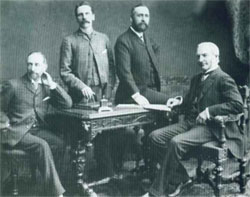 The PartnersHarland, Wolff, Pirrie and Wilson
The PartnersHarland, Wolff, Pirrie and Wilson
 The HatsChairmen, MD's, CEO's
The HatsChairmen, MD's, CEO's
 Sir Frederick RebbeckChairman 1930-41 1944-62
Sir Frederick RebbeckChairman 1930-41 1944-62
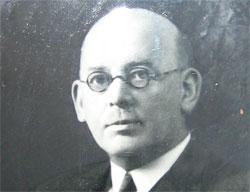 Sir Charles PalmourChairman 1941-1944
Sir Charles PalmourChairman 1941-1944
 John S BallieChairman 1962-1965
John S BallieChairman 1962-1965
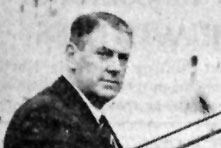 Dr Dennis RebbeckChairman 1965-1966
Dr Dennis RebbeckChairman 1965-1966
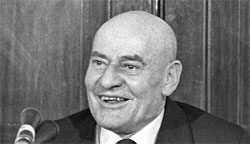 Sir John MallabarChairman 1966-1970
Sir John MallabarChairman 1966-1970
 Joe R EdwardsChairman 1970
Joe R EdwardsChairman 1970
 Alan WattActing Chairman 1970-1971
Alan WattActing Chairman 1970-1971
 Lord RochdaleChairman 1971- 1975
Lord RochdaleChairman 1971- 1975
 Sir Brian MortonChairman 1975-1980
Sir Brian MortonChairman 1975-1980
 Victor Alexander CookeChairman 1980-1981)
Victor Alexander CookeChairman 1980-1981)
 Vivian WadsworthChairman 1981-1982
Vivian WadsworthChairman 1981-1982
 Sir John ParkerChairman 1982-1992
Sir John ParkerChairman 1982-1992
 Islandmen(and Women)
Islandmen(and Women)
 Save our ShipyardSupport and solidarity
Save our ShipyardSupport and solidarity
 The War MemorialsWe Will Remember Them
The War MemorialsWe Will Remember Them
 The Bible Class
The Bible Class
 Nicknames
Nicknames
 The Yarns(and Tall Tales)
The Yarns(and Tall Tales)
 The Shipyard IndentureJW Mullholland
The Shipyard IndentureJW Mullholland

